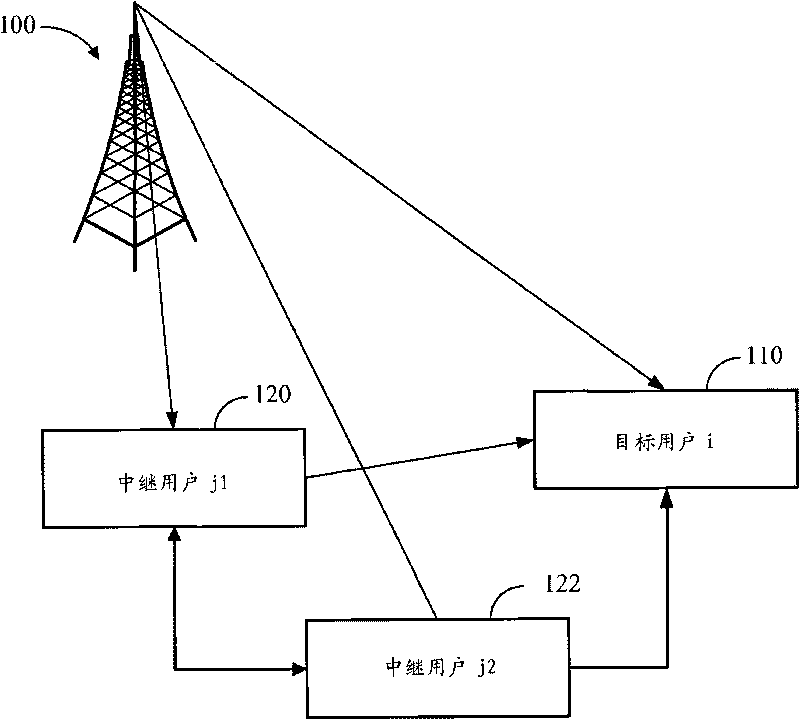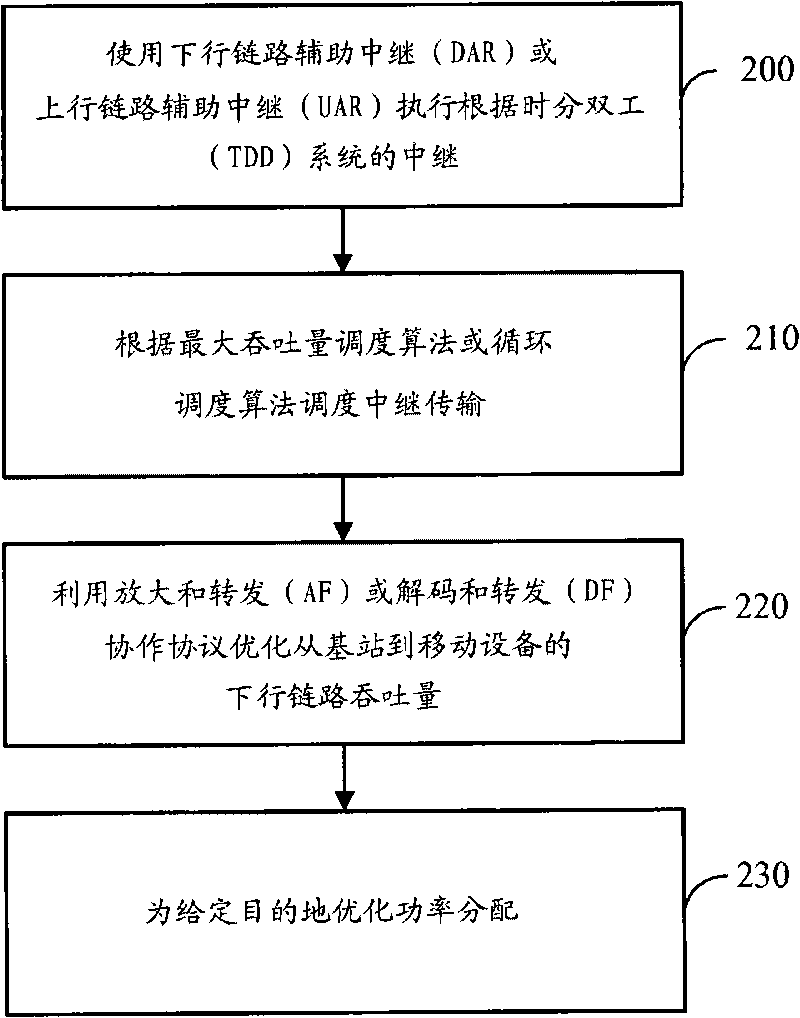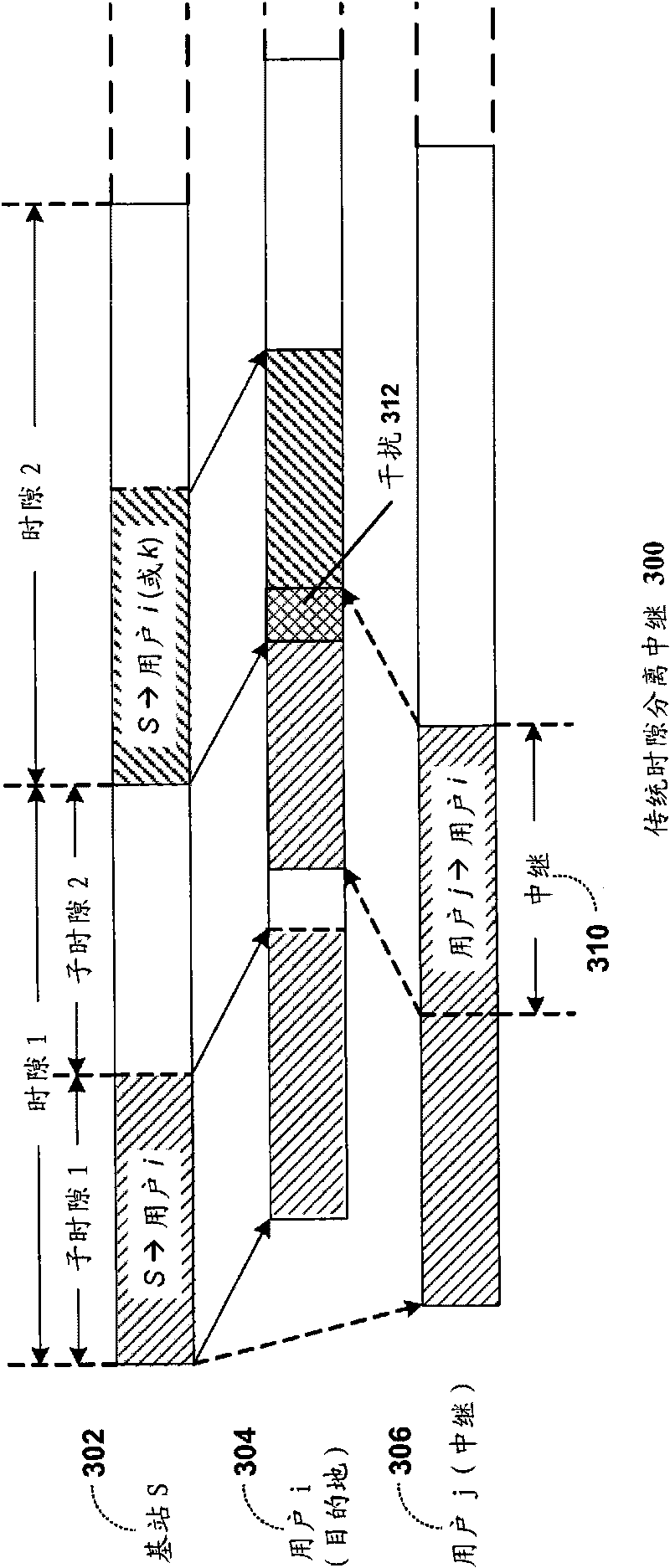Optimizing downlink throughput with user cooperation and scheduling in adaptive cellular networks
A downlink and throughput technology, applied in the direction of location diversity, advanced technology, wireless communication, etc., can solve problems such as not considering the system prospect, not considering the effect of user scheduling, spectrum loss, etc.
- Summary
- Abstract
- Description
- Claims
- Application Information
AI Technical Summary
Problems solved by technology
Method used
Image
Examples
Embodiment Construction
[0021] overview
[0022] As mentioned in the background, user collaboration is an emerging transmission framework where users act as relays for each other in order to provide additional diversity paths for better overall performance than without the additional diversity paths. However, existing methods only focus on the physical layer characteristics and the operation of a fixed source and destination pair at a specific time. Accordingly, improved scheduling strategies over current user cooperation techniques employed by conventional cellular networks are desired.
[0023] Considering the shortcomings of the state of the art as described in the background, in various embodiments described herein, user cooperation and scheduling are used to optimize downlink throughput for an adaptive cellular network. Several commonly used cooperative strategies are evaluated under different fairness constraints, and DF protocols are not shown to be able to provide any capacity gain over thei...
PUM
 Login to View More
Login to View More Abstract
Description
Claims
Application Information
 Login to View More
Login to View More - R&D
- Intellectual Property
- Life Sciences
- Materials
- Tech Scout
- Unparalleled Data Quality
- Higher Quality Content
- 60% Fewer Hallucinations
Browse by: Latest US Patents, China's latest patents, Technical Efficacy Thesaurus, Application Domain, Technology Topic, Popular Technical Reports.
© 2025 PatSnap. All rights reserved.Legal|Privacy policy|Modern Slavery Act Transparency Statement|Sitemap|About US| Contact US: help@patsnap.com



